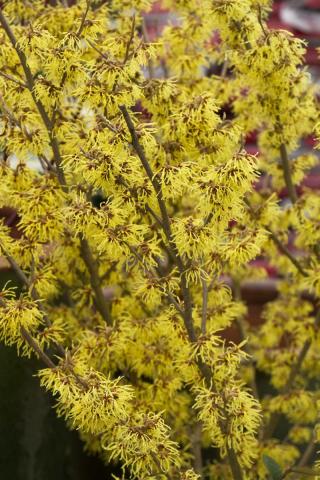Native Plant Information

Native plants are, in a word, local. They are plants that have been growing in a particular habitat and region, typically for thousands of years or longer. Also called indigenous, they are well adapted to the climate, light, and soil conditions that characterize their ecosystem.
In Massachusetts, we consider all the plants that grew here prior to European colonization to be native. They evolved slowly over time with relatively little interference from humans, although they were an important part of Native American life. These were the only plants growing here before settlers began introducing non-native plants from other continents, expanding agricultural practices, and manipulating the genetics of plants through cross-breeding and now, bioengineering.
Our Recommended Native Plant Lists and Resources:
- Complete List of Native Plant Species in Wayland
- Use this tool from Native Plant Trust to instantly get a list of plants based on yard conditions, flower color/size preference, and more for your garden plans: https://plantfinder.nativeplanttrust.org/index.cfm
- Grow Native Mass Plant List
- Mass Audubon Wildlife-Friendly Plant List
- Invasive Plants Commonly Misidentified as Native Plants
- The Vascular Plants of Massachusetts: A County Checklist
- Native Shrubs for Planting as Wildlife Food
- Selecting Plants For Pollinators
What Makes Native Plants Important?
Native plants are important as they provide the foundation for healthy ecosystems. If they are properly sited for their desired soil and light requirements, they can require less water, fertilizer, and maintenance to thrive.
The fruits and berries of native plants are critical to bird life, and provide approximately 40% of the avian diet as a whole. When birds eat these fruits, the ecosystem gets the benefit of seed dispersal, as the birds excrete the seeds in their droppings. A reasonable number of these will germinate and that plant species is sustained from generation to generation. Unfortunately, if the bird eats the fruits of an invasive plant, it spreads these undesirable plants further and further afield, and because of their aggressive ability to out-compete other plants, the invasives continue to take over and damage the ecosystem even further.
What might surprise you about native plants is that they are especially important because of the insects they host. We humans have been programmed to think otherwise, but insects are critical to our ecosystems and therefore to us. On the whole, insects and other arthropods provide about 60% of the avian diet. And they are absolutely critical to the nestlings of terrestrial species as virtually their sole food source. So without insects, our beautiful songbirds could not survive or raise their young. Without caterpillars, there would be no butterflies. Without ponds and vernal pools teeming with insect life, there would be no spring peepers or amphibians. Insects are one hub in our web of life, critical intermediaries between plants and the animal world.
Native plants are host to a vastly greater number and variety of insect species than are non-natives. According to entomologist Douglas Tallamy, author of Bringing Nature Home, our native flowering dogwood (Cornus florida) supports one hundred and seventeen species of moths and butterflies, while the non-native Kousa dogwood hosts only six species of insect herbivores. The Golden Rain Tree (Koelreuteria paniculata) from China supports one caterpillar species, while our native oaks can host 534 species. And if those caterpillars don’t make it into beautiful butterflies or moths, all make good bird food. Tallamy can cite example after example, summarizing his years of extensive research, and concluding that “native ornamentals support twenty-nine times the biodiversity of alien ornamentals.” And these insects are not to be feared, because in a balanced ecosystem, they nibble small enough portions of the plants available so that we hardly notice their presence.
So there we have it. Plants provide the foundation for life by capturing the energy of the sun and converting it into biomass for the rest of us to eat, and native plants promote the biodiversity necessary for balanced ecosystems. If we want a sustainable future, it is time to pay attention to the importance of growing natives.

